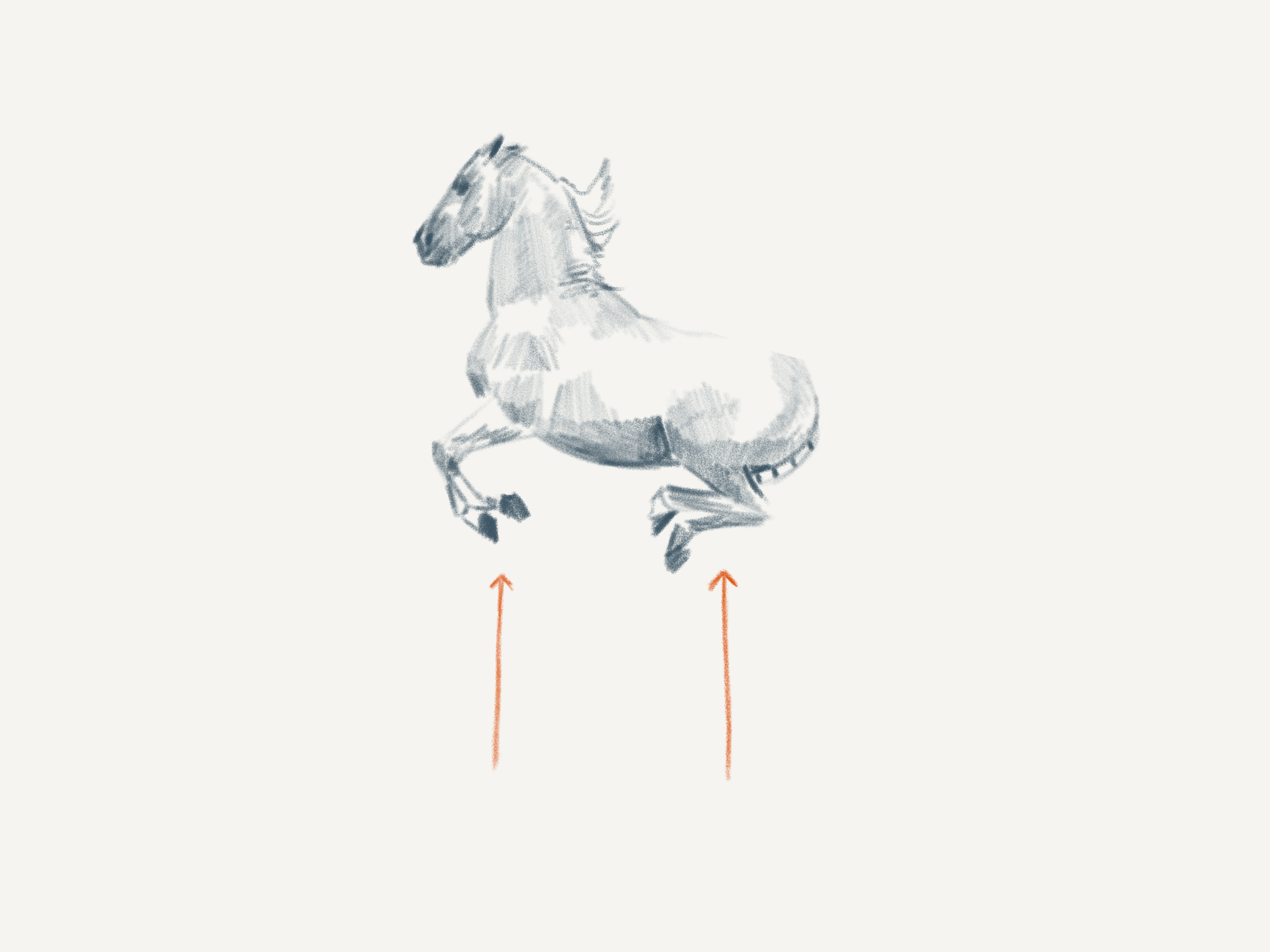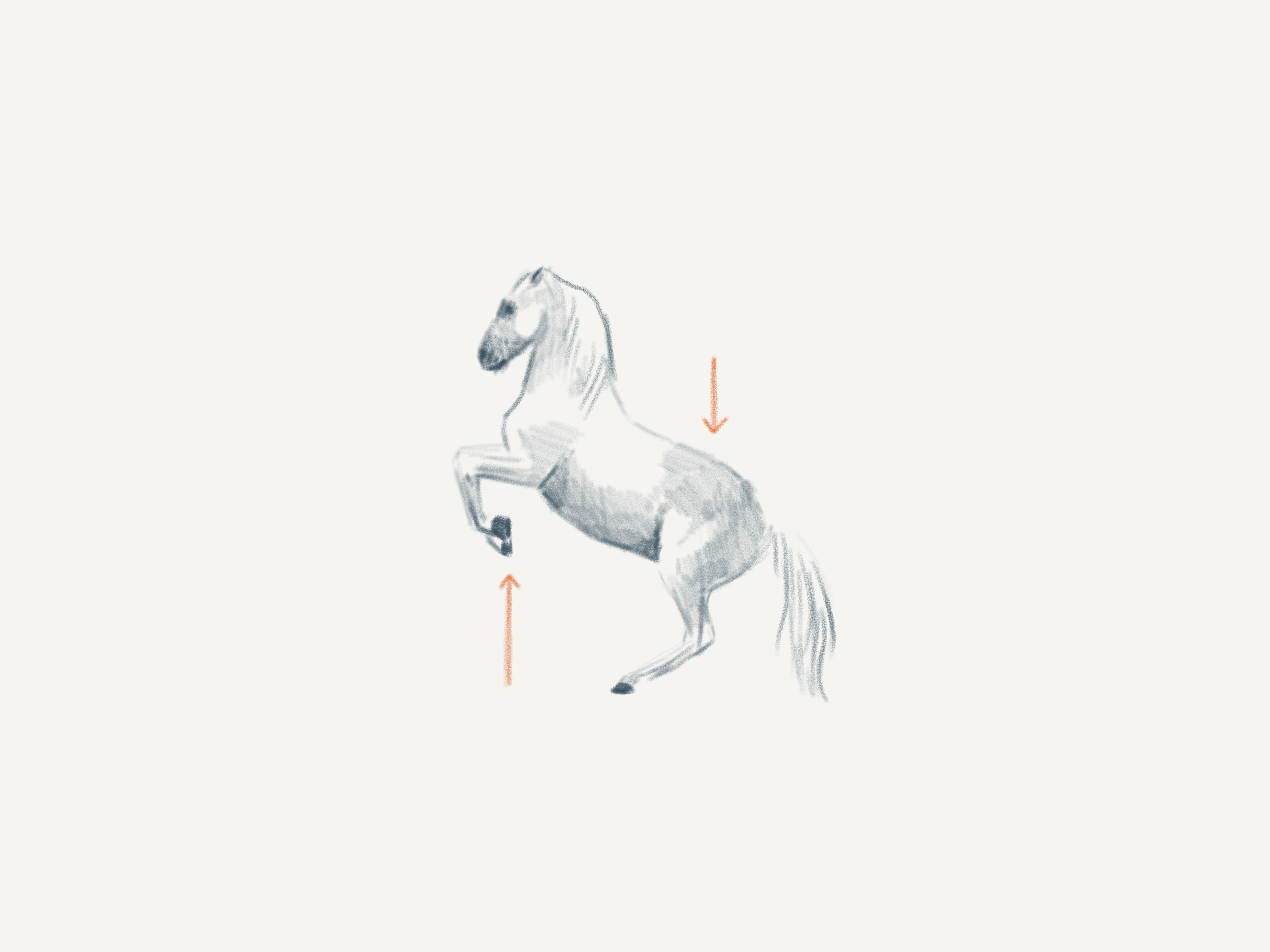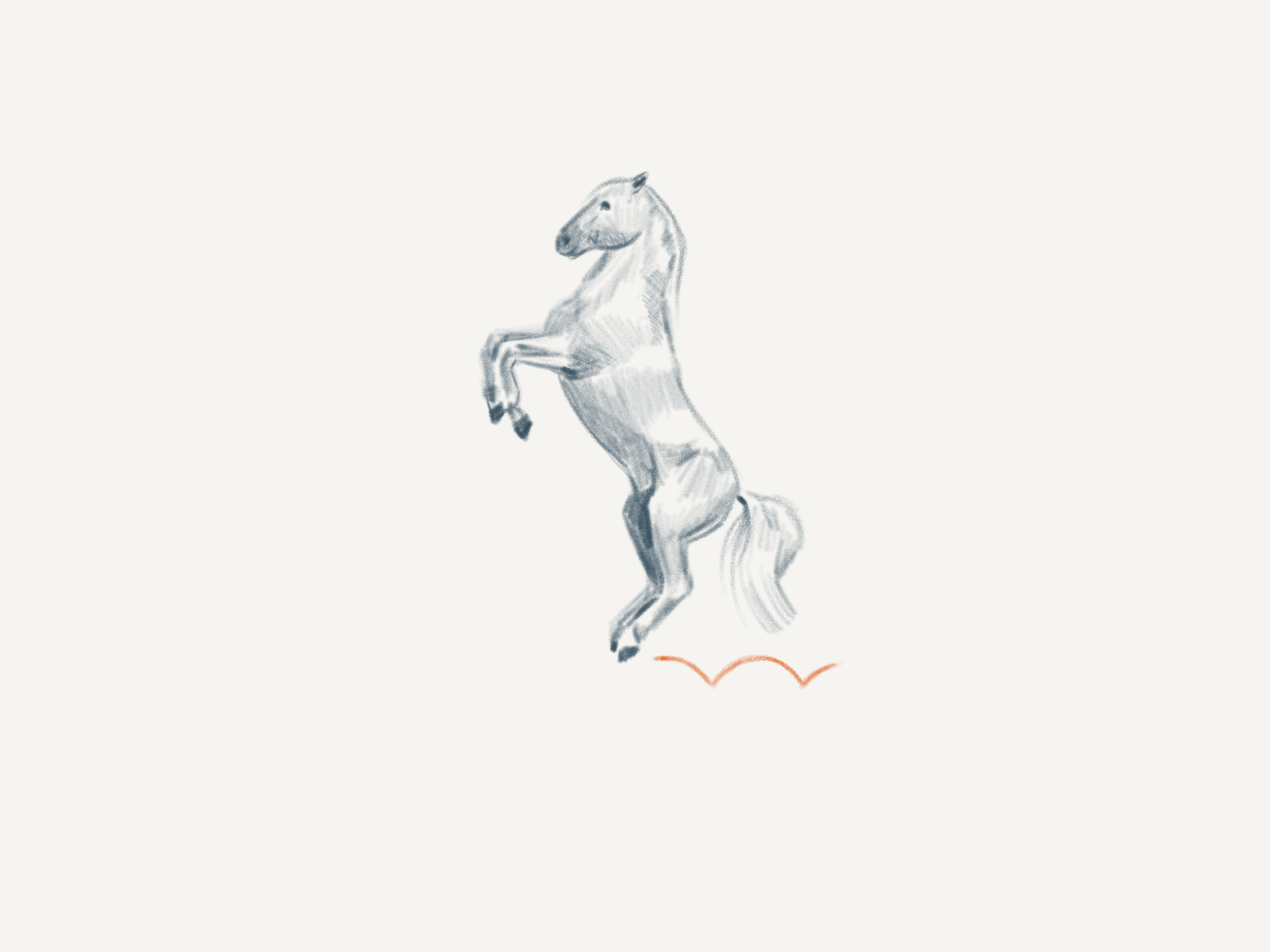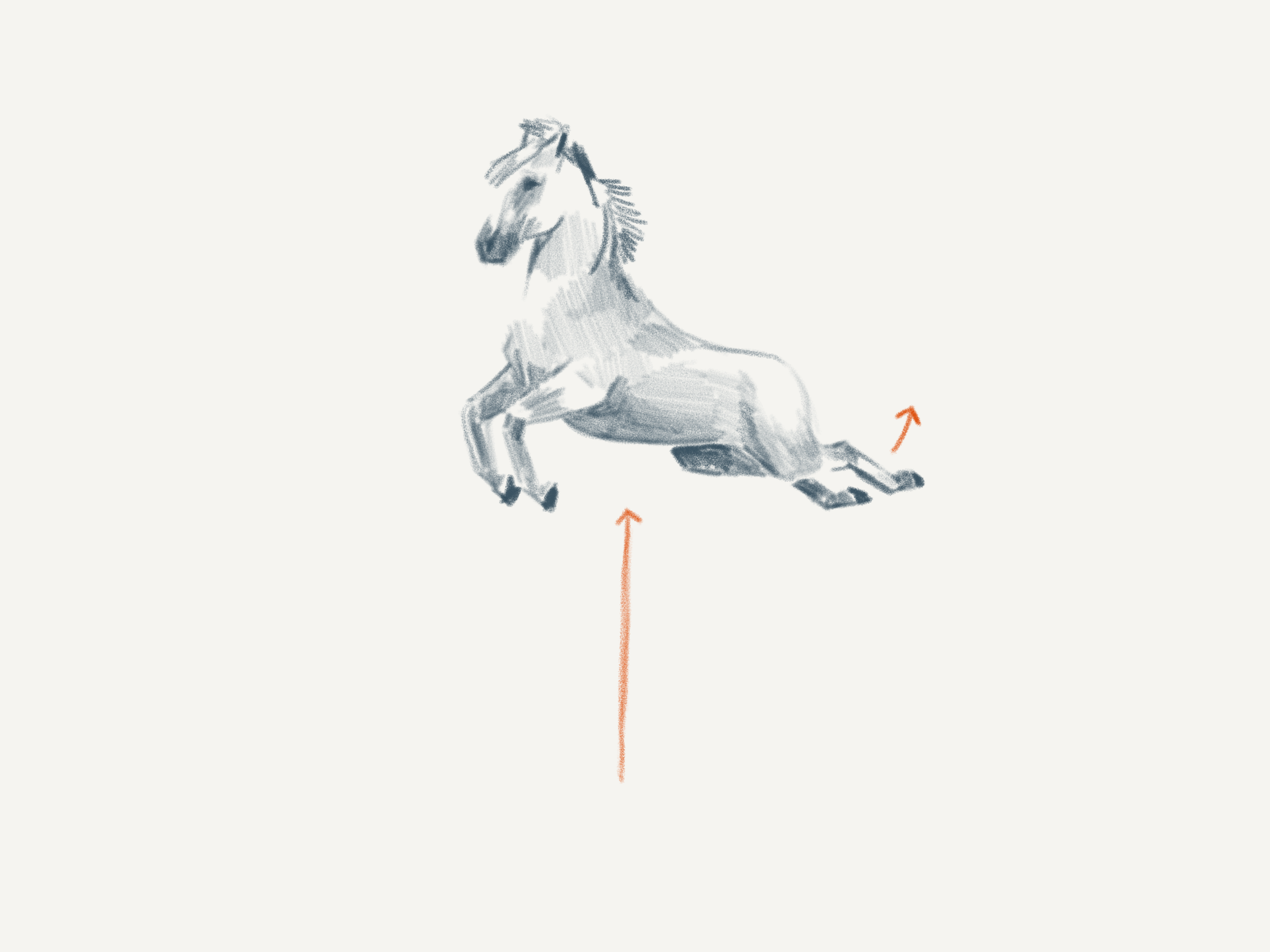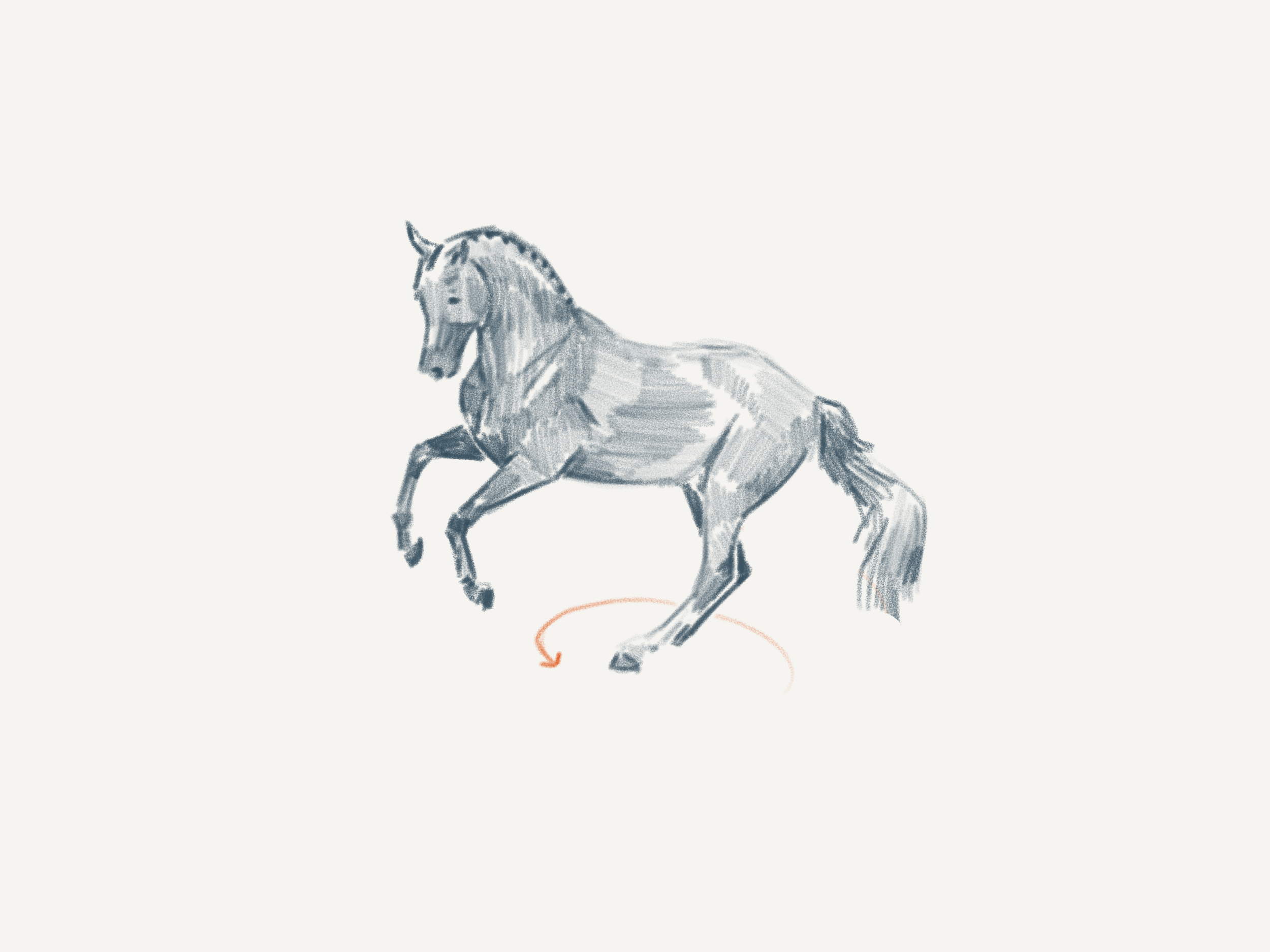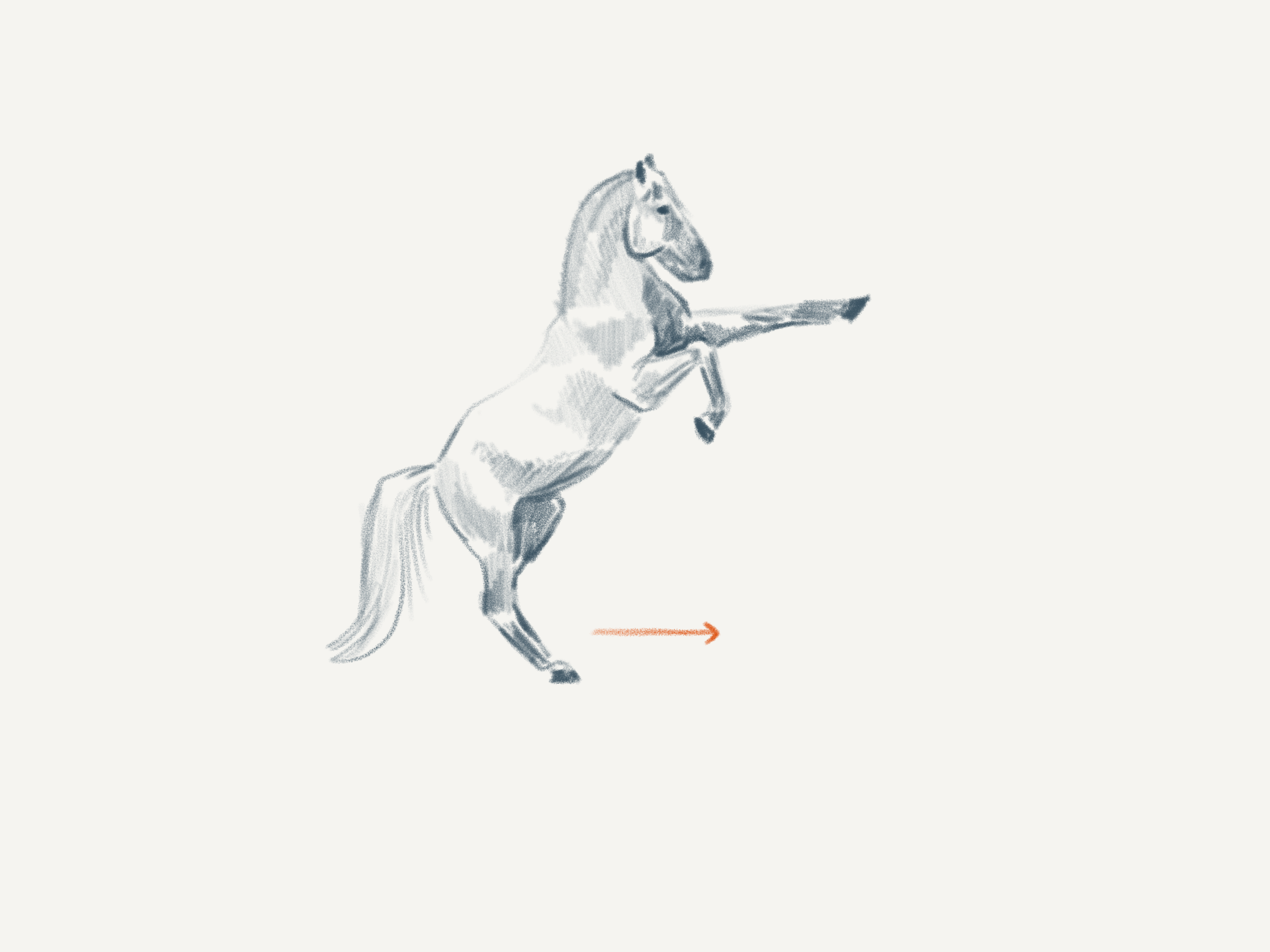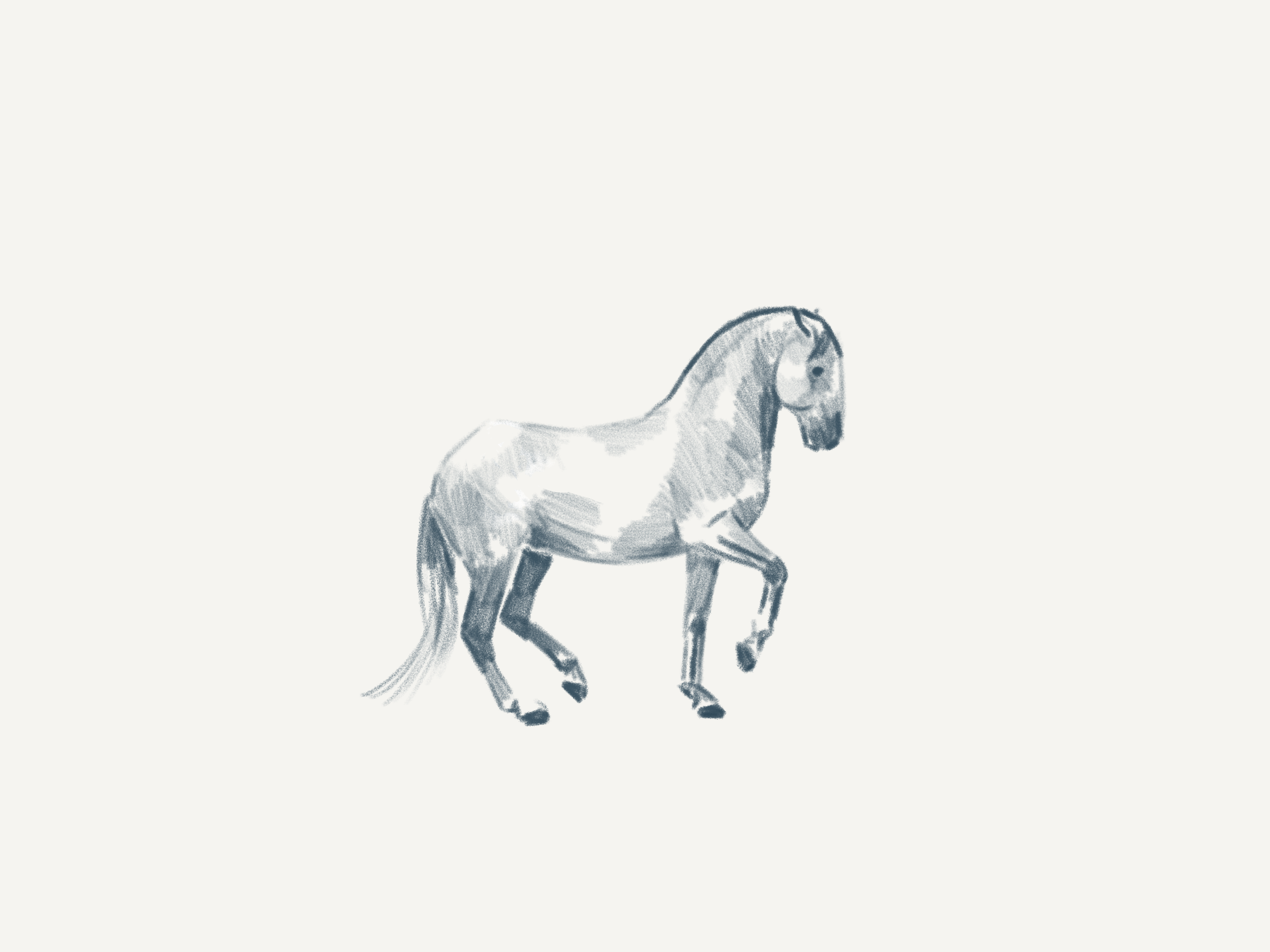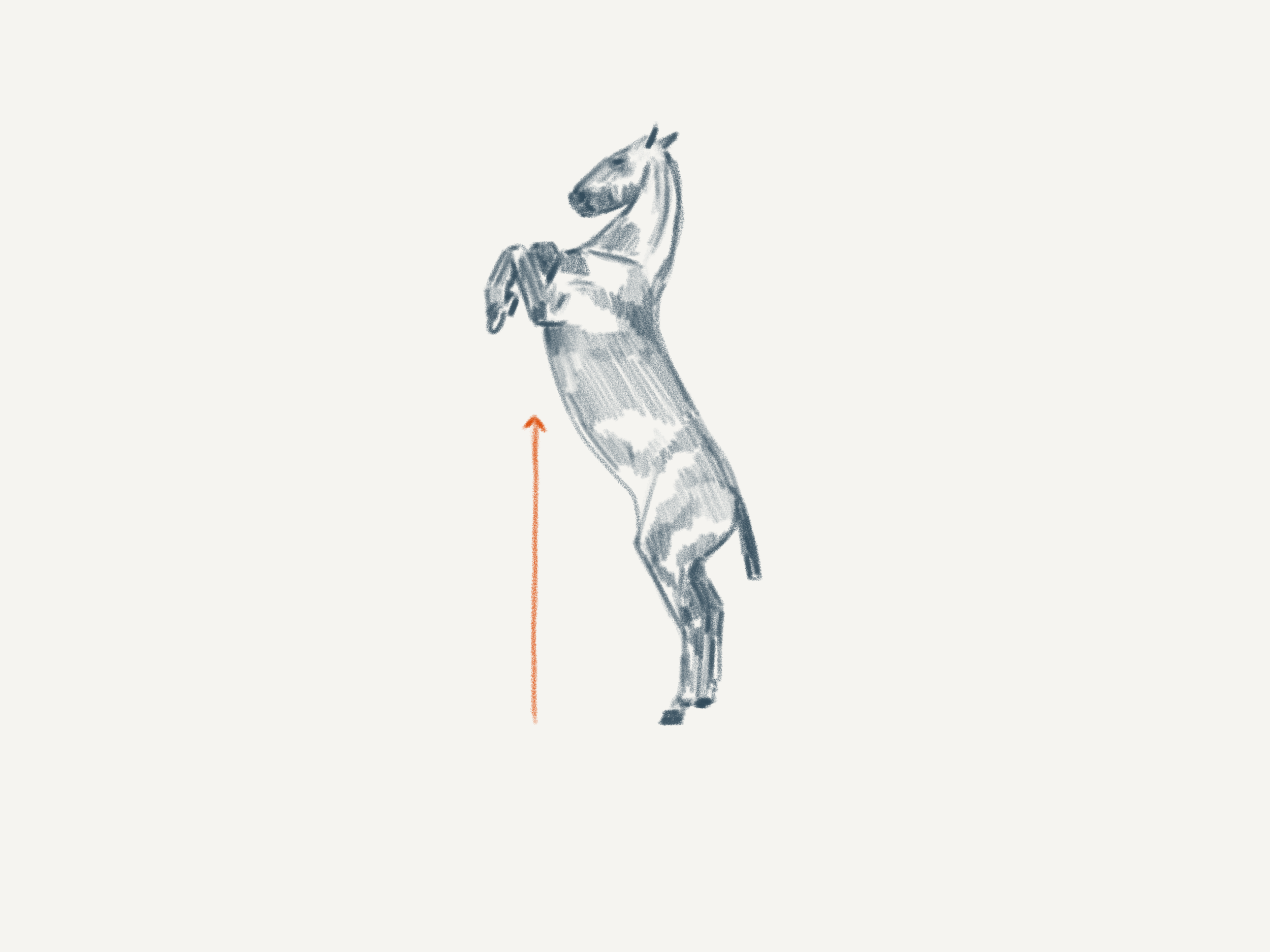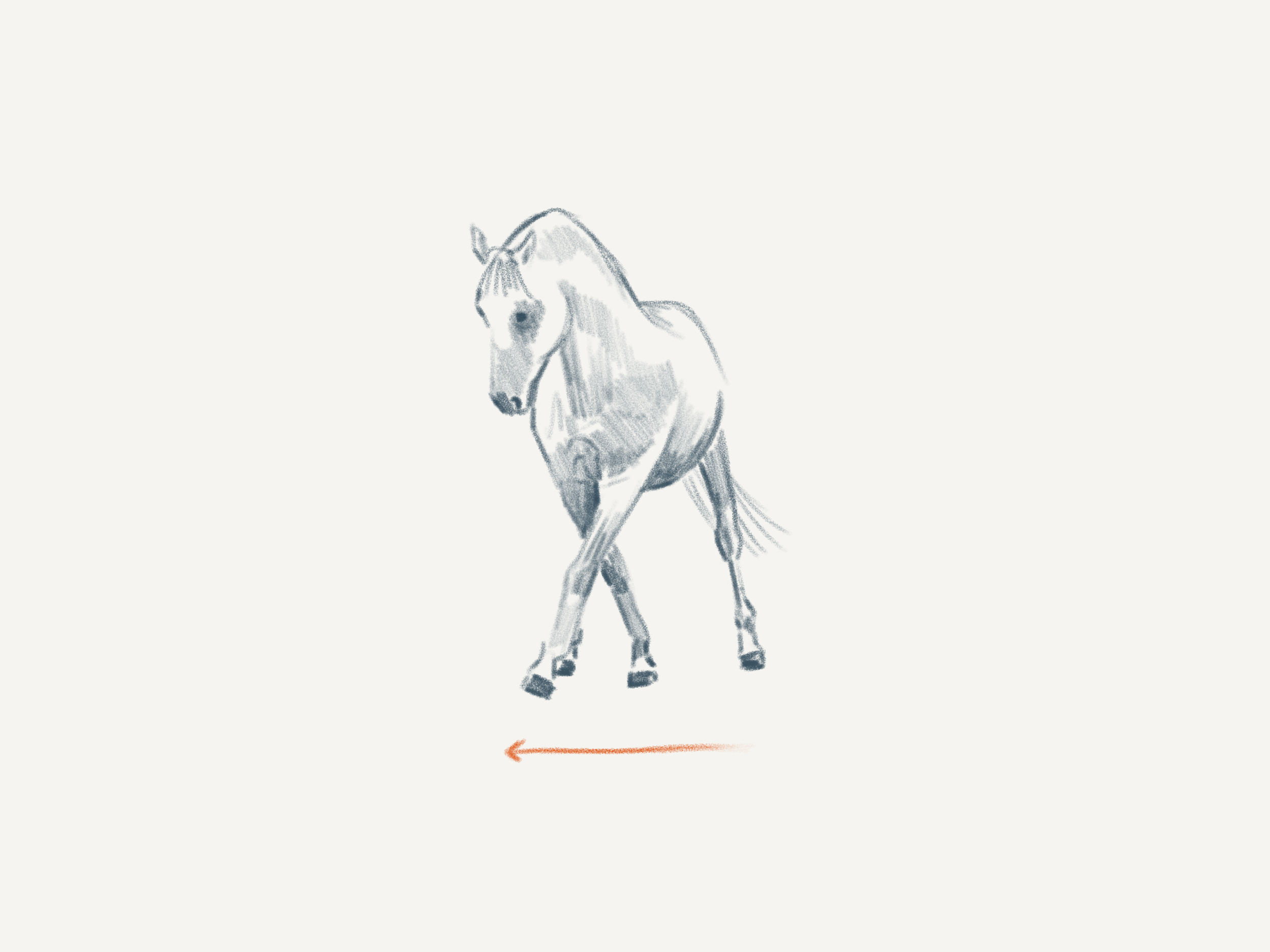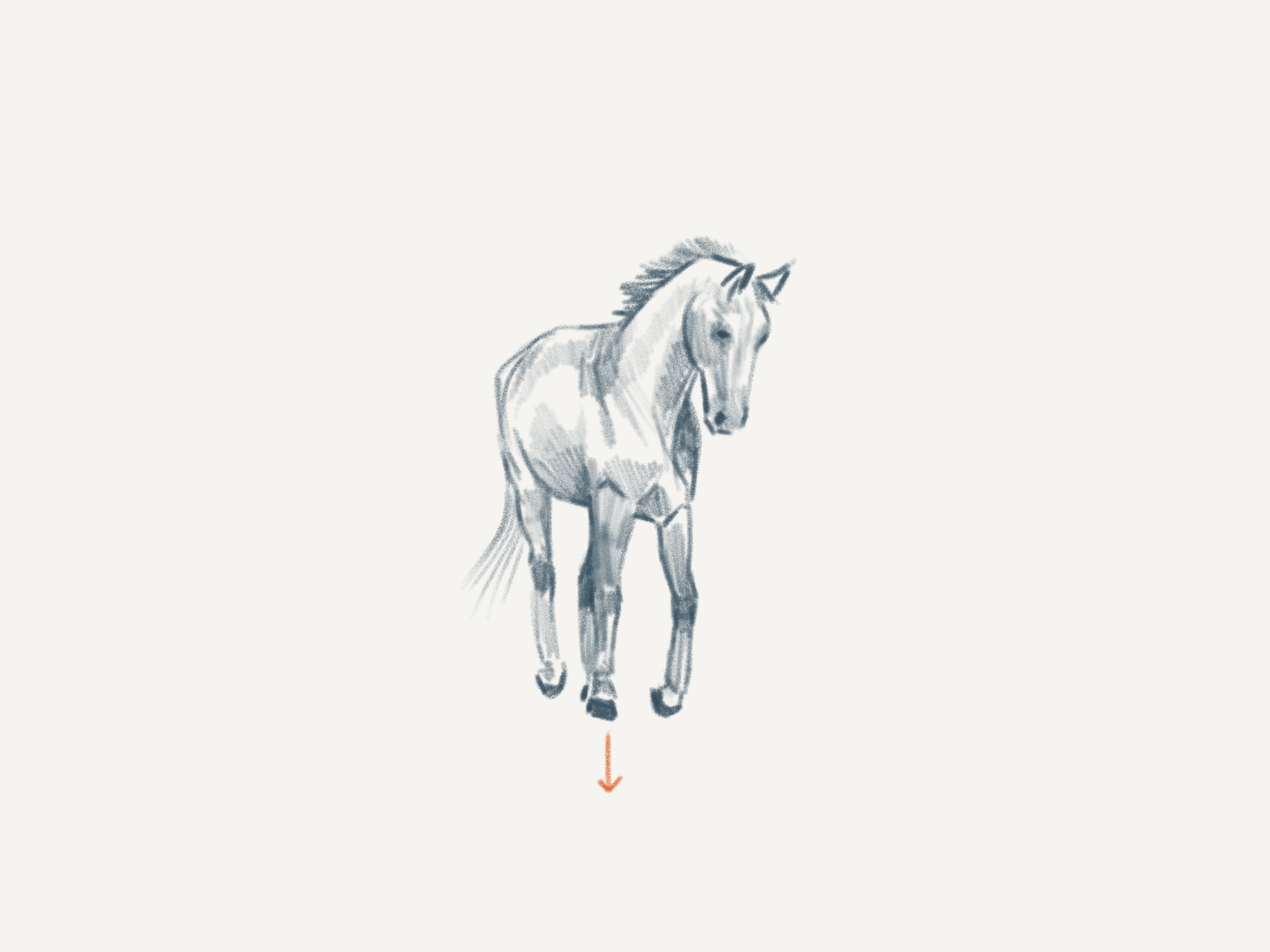Kicking Those Hooves
I’m sure you’ve seen them, wacky looking paintings of horses in beautifully extravagant flying positions. You may have wondered why exactly did they choose to paint them in such a manner? In this blog post I’ll attempt to shed some light on the powerful movements of classical dressage, a sport with military origins.
Johann Georg de Hamilton - Kladruber Hengst "Cerbero" in der Kapriole | Via Repolco
TL;DR
→ The art of classical dressage is derived from battlefield movements
→ What contemporary war time movements may become a future artistic expression?
Since 1912, dressage has been an Olympic sport that can be found all around the world. It’s sometimes referred to as “horse ballet” for its series of carefully choreographed movements that horse and rider perform in unison. On the other hand, classical dressage is the older, more traditional version of the sport. It is only practiced in certain riding schools around the world, most notably at the Spanish Riding School in Austria (founded in 1575) and at the Cadre Noir de Saumur in France (founded in 1828). The horses there are trained in the classical, baroque dressage movements.
Horses back in the medieval period were stockier, draft build capable of carrying the weight of a knight. With horseback warfare being common, military maneuvers were developed to utilize the horse as a weapon. The movements of classical dressage originated in developing powerful kicks that could be used in combat. Today, they’ve evolved to showcase the power, strength, and control of the horse.
(Personally I’m a big fan of these pudgy, jelly-bean looking horses)
Baroque dressage movements
Some are still used in modern dressage (piaffe, half-pass, pirouette) but all of the air movements are strictly classical. Here’s a number of dressage movements drawn by yours truly.
Non dressage equestrian military movements
.
La descente Caprilli
Named la descente Caprilli, these photos were taken betwen 1902-1906 at the Tor di Quinto Cavalry School near Rome. The rider is Frederico Caprilli, after whom the maneuver is named (random fact: Caprilli is also the rider who developed the “forward seat” rider position for horse jumping -the style you see today- to replace the old jumping seat that had riders yanking on the reins and sticking their legs straight out in front of them).
German soldiers shooting while standing on the back of a horse, 1935.
Horse as ladder
In other photos we can see soldiers standing on the back of a horse, shooting his gun. The horses were trained to stand stock still through repeated exposure to loud noises, gun shoots, and movement.
So where does this leave us, how is this design futurism?
Well, let’s just take note of what we’ve learned: modern artistic and sporting disciplines sometimes originate from warfare movements. This leads us to wonder what modern forms of violence might transition to become a future artistic discipline? It’s a bit of a stretch, but it’s useful in thinking about what we’re already doing today that will be laying the foundations for tomorrow (often without us even realizing it).
Imagine a future where modern military maneuvers serve as the foundation of a future artistic discipline
What might a future look like where marksmanship, drone strikes or ransomware have become a new expression of the arts? What if attack dogs become future dance partners in a future artistic discipline?

